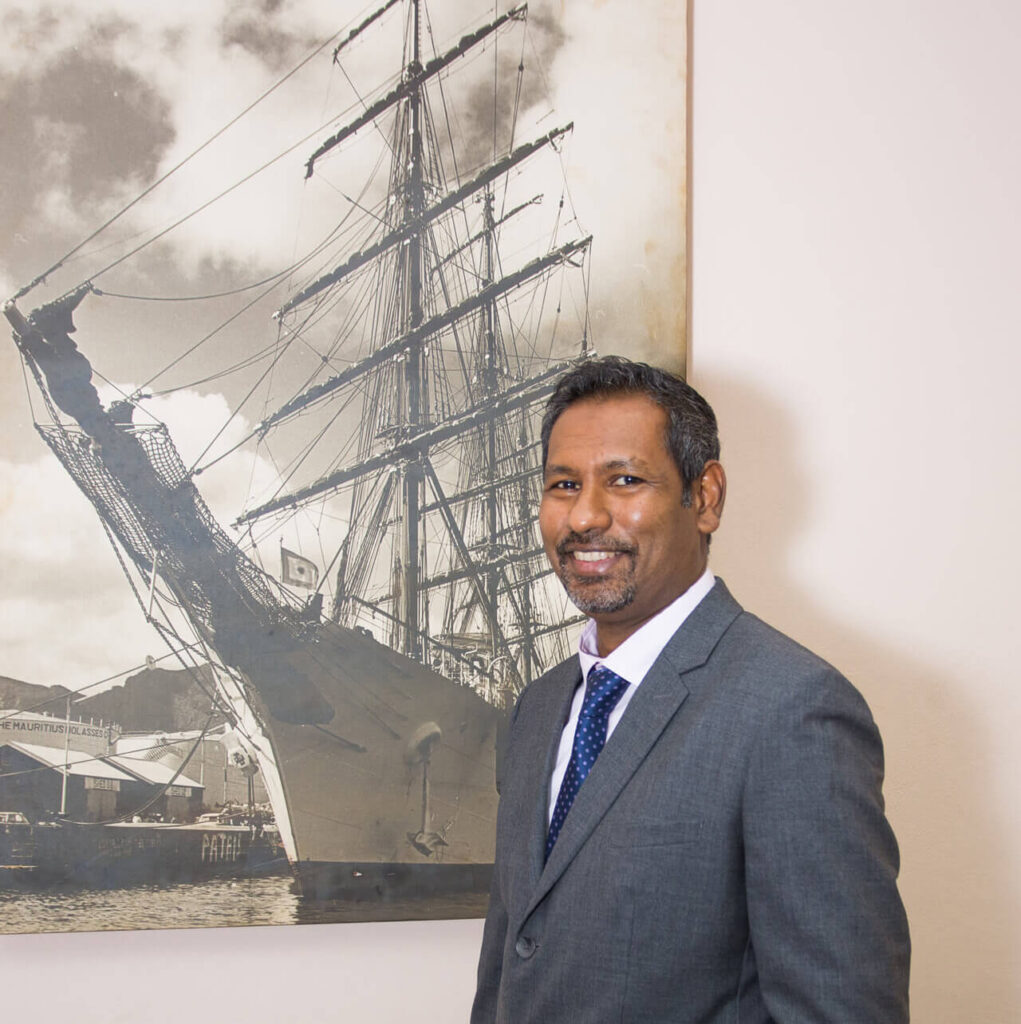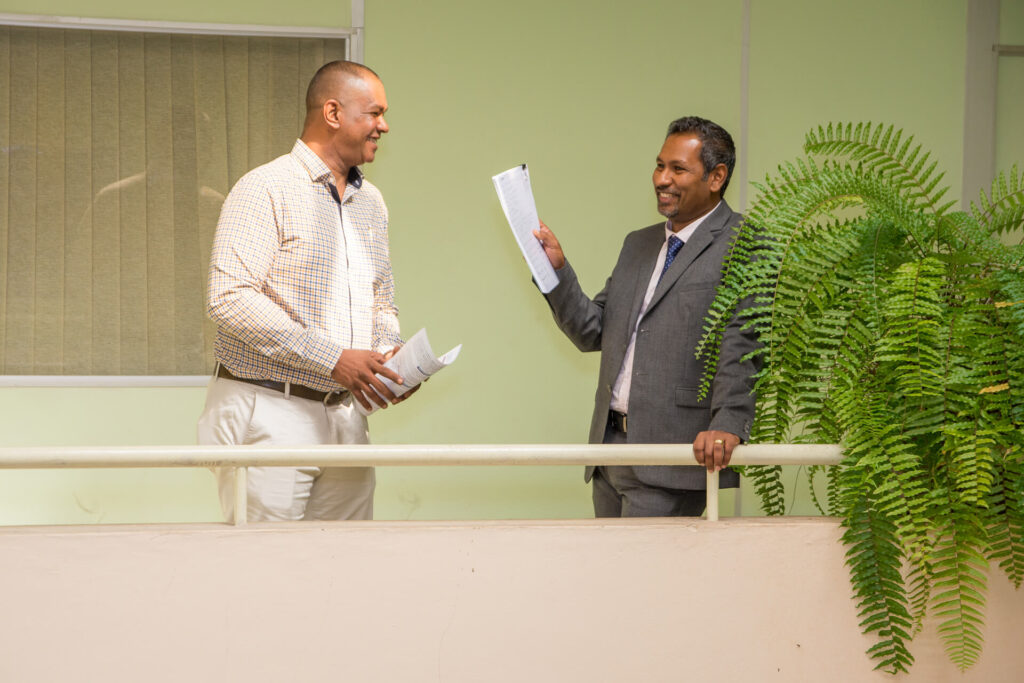Sanjeeven Gopala Krishnan Permall | Chairman, Cargo Handling Corporation Limited
Sanjeeven Permall is a man with a mission. The young Chairman of the Cargo Handling Corporation Ltd (CHCL) is determined to revamp this strategic, and also heavily unionised, institution. Created in 1983, the CHCL faces rising competition from ports of Africa which are gearing up to provide modern facilities and which may rival the competitiveness of Port-Louis as a transshipment hub.
Chairman Sanjeeven Permall, since taking up this tenure, what changes have you witnessed at the CHCL ?
The Covid 19 pandemic has both been a great challenge and a powerful change enabler for the Cargo Handling Corporation Ltd. Founded in 1983, the CHCL has inherited a work culture which dates from more than a century of port activity. And it handles, as its name indicates all types of cargo, namely, Containers, bulk cargo; coal; maize; steel but also cars and other heavy machinery for e.g Metro Express wagons. 99% of the country’s cargo is handled by the CHCL. And it is also a crucial node for exportation of products. The outbreak of the Coronavirus pandemic at the end of 2019, has highlighted just how essential the cargo handling activity is for our country’s economy.
Discipline on the work site and excellence in Customer Care are the new focus for the CHCL organization. For the safety and protection of each worker and the port activity itself, unflinching discipline has been enforced on the work site with regards to wearing protective gears and following health and safety protocols, but also in terms of time management. In parallel and in line with maintaining ease of doing business in these trying times, the Customer Care culture is being entirely revamped. Even the infrastructure is being upgraded to meet health and safety requirements as well as customer expectations.
Excellence in Customer Care at the port also comes with an expected productivity rate. The CHCL appears to lag behind other ports on international benchmarks.
Indeed, we have entered a highly competitive period in time with many ports around Africa and the Indian Ocean gearing up with subsequent investment from countries such as China. I have fixed a clear target to reach in terms of productivity for the CHCL which is to attain a constant rate of 25 moves per hour. Therefore, we have entered a cycle of regular meetings with the trade unions as well as a close monitoring of weekly figures. By being KPI driven we can work steadily together to achieve this target and face the challenges which the port of Port Louis is facing with regards to regional competition. This is the most sustainable direction to take for the CHCL as a whole.
What are the main hurdles which need to be addressed to reach this target of 25 moves per hour ?
A higher productivity is achieved by a combination of factors for an organisation such as the CHCL. It is the end result of strategic planning and measures enforced at multiple levels. To achieve our target, the CHCL needs to undergo extensive restructuration. However, in doing so, the CHCL remains under the constraint of meeting the requirements of the covenant signed with the AFD which has been a generous donor for the acquisition of modern cranes. The staff costs need be aligned to the AFD’s conditions.
At the same time, obsolete departments need to be phased out. While early retirement plans may suit some workers, for others, there will be a need for training and redeployment. Different terminals need different sets of expertise. With sophisticated machinery and modernisation, we may require workers to develop new skills or be recruited with new criteria for qualifications. An engineering department with experts in various areas needs to be created in line with new responsibilities and needs. Furthermore, in case the local workforce may not be immediately operational, the CHCL may have to consider employing workforce from abroad which will train and pass on their knowhow to the Mauritian workforce. So, clearly, the human capital needs to be enriched to embrace the diversity of operations being carried out at the CHCL and to follow the rapid pace of digitalisation.
Furthermore, with increasing volumes of containers, yard planning is crucial. And with the help of IOT and proper software, but also with additional space for storage, there is concrete room for optimisation and efficiency. Predictive management with a holistic vision is crucial so that transfer, storage, exit of various types of cargos, via multimodal transport systems can be better organised.
Now, we also need to keep in mind that the CHCL’s productivity rate depends directly on the working condition of the machinery that we have. Our constraint is to have 24hr hour availability of cranes and gantries also. And these are very expensive equipment which need to be used according to proper maintenance guidelines. If we overuse them with no proper resting time, we go headlong towards machinery breakdowns and delays which would be detrimental to our clients and whole operations’ planning. So, at the CHCL, we have to be highly responsive regarding day to day operations, yet at the same time, have a long term vision to maximise the use of high end machinery. We don’t know yet what the future has in store for us, but we can already see some trends and as we plan acquisition of new equipment, we need to be forward looking and already integrate scenarios which include newer volumes and types of activities.
While we are talking of future scenarios and trends, the recent blockage of the Suez Canal by the Ever Given has shown that massive container ships can come with bigger issues.
As port experts, such incidents, which are exceptional, immediately become a case study for us, instead of being a cause to worry. We need to learn from these situations, from different angles: technical, legal and so on. As mentioned above, with proper experts recruited, we can better plan and address issues rising with super panamax container ships. Our aim at the CHCL is to be able to plan the berthing, disembarkation and departure of mega vessels with minimal waiting time. Therefore, the length of the quay and number of cranes available in the future will determine much of our attractivity as a port of transshipment.
Piracy is flaring up along the west coast of Africa, in the Mozambique area. Therefore, future planning to ensure the safety of the maritime routes leading to Mauritius is also a requirement.
With the deployment of NAVIS, a highly sophisticated software, the CHCL aims to develop connectivity and flow of crucial information internally, but also externally, with international clients, but also regional ports and authorities. By being a modern and highly automated port, with such a refined IT system, the CHCL can definitely upgrade its level of service and play its role in ensuring that the maritime route which leads to the Mauritian port of call is the safest one. This software deployment also forms part of the CHCL’s greater vision to enhance customer care and service to both the clients and the public while rendering internal operations leaner.




Comments are closed.